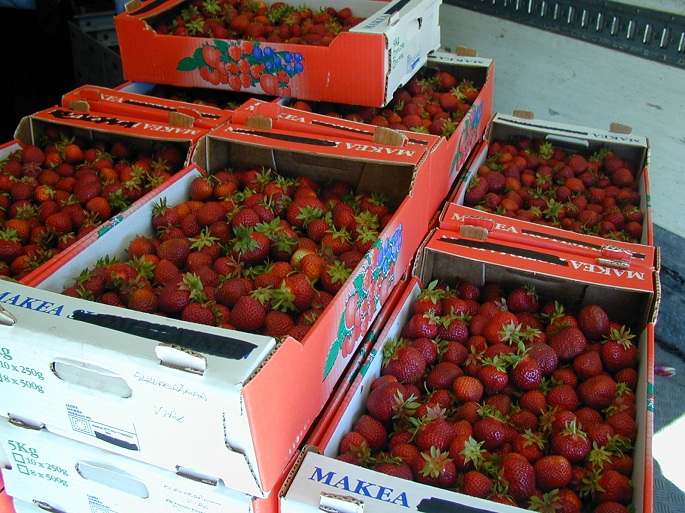Method devised to detect strawberry origin
Published : 24 Jun 2019, 18:35
Updated : 25 Jun 2019, 04:01
Natural Resources Institute Finland (Luke) and the Finnish Food Authority have developed an analytical method for ensuring that strawberries sold as Finnish actually originate in Finland.
It has taken several years to build a database of Finnish strawberries, said Finnish Food Authority in a press release.
The database is now comprehensive enough to use for geographical tracing. Samples can already be compared against strawberries grown in Poland and Sweden, and Estonian berries will be added to the database later this year. The method has now also been made available to local authorities, and local-authority food inspectors have begun to sample strawberries in various points of sale. In the future, the same method will be used to trace the origins of other food products.
Finnish consumers want to buy produce grown in Finland. Traceability across the entire food supply chain benefits consumers, farmers and retailers alike.
“Fraudulent food labelling has become an increasingly hot topic in recent years. Finnish strawberries are a valuable commodity, which makes them vulnerable to origin fraud. The geographical origin of berries is difficult to verify, and traceability information gets lost along the long supply chain. The analytical technique, which is based on stable, nonradioactive isotopes, solves the problem”, said Head of Chemistry Unit Annikki Welling from the Finnish Food Authority.
The technique is based on the ratios of different forms of stable, nonradioactive isotopes found in chemical elements. Isotopes are found in different concentrations in different geographical areas. Stable isotopes are absorbed into plants in ratios determined by their environment, which makes it possible to identify the origin of plant products on the basis of their isotope ratios. The data are supplemented by determining the minerals contained in the plants.
"We have collected samples from all the strawberry-growing regions of Finland from the Åland Islands to Kainuu. We will also soon have access to data on strawberries grown in Estonia. the isotope ratios of strawberries grown in Poland and Sweden are already known, the system is beginning to show potential as a genuine mark of Finnish origin. More samples can be collected in subsequent years if necessary. Finnish growers can also have their own produce tested if they want to establish the exact 'fingerprint' of their berries. There is no real need to do that, however, as the ratios of Finnish berries make them stand out very clearly from produce grown elsewhere," said Research Professor Saila Karhu from Luke.
For now, the isotope analyses have been outsourced to a third party, but the Finnish Food Authority will soon be able to begin analysing samples in its own laboratory thanks to equipment co-purchased with Luke. This will make it possible to analyse a wider range of samples and products. The same equipment can also be used to study isotope ratios for other purposes.
This year’s sampling campaign will begin as soon as strawberries ripen and will continue until the end of the season. The database already contains samples collected by Luke’s staff across the entire area of Finland where strawberries were grown in 2017 and 2018. The samples to be collected in 2019 will add information about different growing methods, such as organic farming and strawberries grown in polytunnels. The collection of domestic reference samples also continues.
Since isotype ratios provide information about the growth of plants and the origin of nutrients, the technique can also be used to control organic produce or to track nutrient transport, for example.
Nonradioactive isotope analysis is also used to study the environment and climate.
As the environment changes, long-living plants such as trees store isotopes in ratios determined by the conditions of each era in their wooden structures and therefore collect evidence of, for example, climate change.


